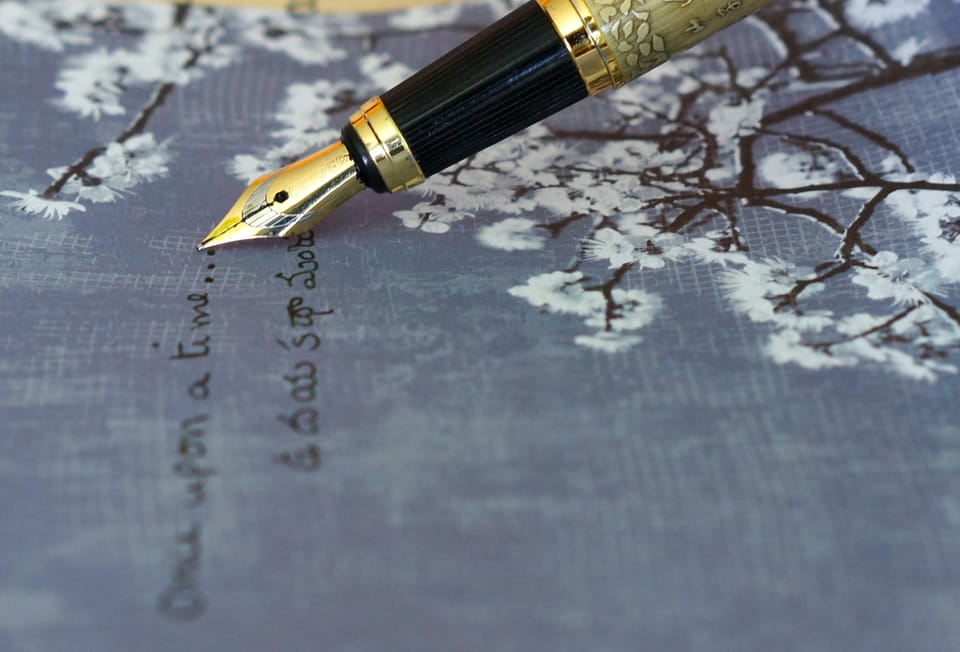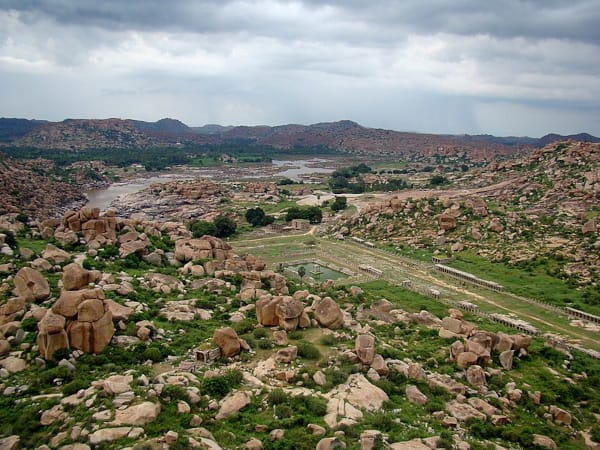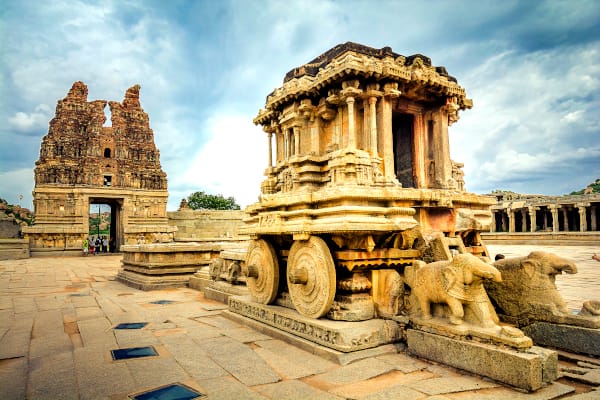Walking in the footsteps of mighty kings

Our social life in గుంతకల్లు (Guntakallu or Guntakal) was busier and fun filled compared to when we lived in villages. We had several relatives in గుంతకల్లు (Guntakallu). If you thought the carrot juice health fad is a new phenomenon, think again. A relative of ours used to give us carrot, tomato and other vegetable juices when we went to visit them. She was a one time బాల వితంతువు (bala vitantuvu is child bride in Telugu), who was married again and raising a family. జేజమ్మ (Jejamma is great grandmother in Telugu) provided shelter, paid for education, and found a suitable husband for her. She was one of many బాల వితంతువు (bala vitantuvu) women జేజమ్మ (Jejamma) helped, going against the traditions and norms by helping widows remarry. Her husband was also a teacher like her. She listened to our complaints about our teachers and school patiently with a smile. The couple had a son who was a year or two younger to me. Marrying a widow is considered a bad omen according to the Hindu traditions and widows remain single for the rest of their lives. People shy away from marrying one. Her husband was progressive and didn’t heed the dire warnings against marrying a widow. This practice is changing slowly and widows are able to remarry.
When we went out shopping or visited family or friends, all four of us rode on నాన్న (Nanna)’s Vespa scooter. నాన్న (Nanna) saved up enough money to buy this scooter a few months before we moved to గుంతకల్లు (Guntakallu). I would sit side saddle on the backseat behind అమ్మ (Amma) or in the middle between అమ్మ (Amma) and నాన్న (Nanna). The backseat was barely big enough for us both to ride sidesaddle. నాన్న (Nanna) would be in front of అమ్మ (Amma) in the driver seat with my sister standing all the way in front of him with his arms on the handlebar protecting her from falls. It sounds dangerous to me now, but I didn’t think much of it at that time and we never once had any accidents. This mode of transportation continued until my sister grew taller and her head blocked నాన్న (Nanna)’s view.
Our family and friend circle grew as my aunt, నాన్న (Nanna)’s third sister and her husband introduced us to their friends. One of them was Venkateawara mastaru. He helped us find a tutor and helped with school admissions later that year. Venkateawara mastaru was a tall man like నాన్న (Nanna) with a similar build and broad shoulders. He injured his leg in an accident and walked with a limp using a walking stick. He took care of his mother and siblings after his father’s death, remaining unmarried so he could fulfill his responsibilities without being burdened by additional ones. We attended one of his sister’s weddings when we were living in గుంతకల్లు (Guntakallu). The cook and helpers made large quantities of పులిహార (pulihara is Tamarind rice in Telugu) in a large makeshift cooking tent, mixing steaming rice with tamarind sauce on a large bamboo mat. The పులిహార (pulihara) was delicious and so were the and బొబ్బట్లు (bobbatlu or Puran poli).
బొబ్బట్లు (bobbatlu) is a dish of yester years which has been popular for several centuries in India. There is a reference to this delicious stuffed paratha dish in the Sanskrit encyclopedia, Manasōllāsa aka Abhilashitartha Chintamani, from the 12th-century written by Someshvara III, (1127 – 1138 CE). He was a Western Chalukya king (also known as the Kalyani Chalukyas) and son and the successor of Vikramaditya VI. అమ్మ (Amma) used to make delicious బొబ్బట్లు (bobbatlu or Puran poli) for special occasions and festivals. It is indeed amazing to remember the long history of this dish as the బొబ్బట్లు (bobbatlu) melt in my mouth.
నాన్న (Nanna) had switched jobs temporarily to work for the State of Andhra Pradesh Poultry Marketing Department. He was asked to establish a new office in గుంతకల్లు (Guntakallu). He was trying out this new line of work which he hoped would allow us to live in bigger towns with better schools and colleges. He rented a two story house with an office on the second floor and residence on the ground floor. The office was connected to the residence via a flight of stairs with a door and we kept the door locked from the residence side. Once in a while us kids were allowed to sleep in the office with the door unlocked. Our landlord lived in the same complex and their house faced the front road. Ours was on the side as we walked past theirs to the back of the building. The office could be accessed from the street taking a flight of stairs that faced the main road. Climbing up the stairs led to a very large common terrace and the office area was in the back. Our landlord built the two level house at the back of their main residence to serve as two rental units, both equipped with kitchen and bathroom. The main house and the two units in the back shared a wall. The two rental units together worked very well as an office and residence for us.
The house was long with one big main room which had the stairs to the upstairs office, a small room with a closet, a kitchen, and a bathroom at the end of the house. The entire house was laid out on a long rectangular area. The main room and the kitchen had doors that opened into the side veranda. A squat style latrine was at the end of the veranda. You had to go out of the house to get to the latrine which was scary in the middle of night. The main room served as the living room and our parents’ bedroom. Us kids slept in a makeshift bed on the floor in the small room which served as our dining room during the day and kids bedroom at night. We rolled up our mattress every single morning and set it down at night.
The kitchen didn’t have any counters and అమ్మ (Amma) sat on the floor to cook. This was the only house we had lived in that didn’t have a kitchen counter. When we went to talk to అమ్మ (Amma) while she was in the kitchen, we squatted down or sat on the floor in front of her. Entrance to the bathroom was through the kitchen and we had to work our way around the cooking area to get to it. It wasn’t a very well laid out house for good flow of traffic. We had running water in this house with a tank on the terrace. That was a great improvement over the houses we had lived in before. We had to go to the front of the house to get drinking water when the city chose to release it. It could be very early in the morning around 2 A.M some days. The faucet was in a rectangular well like structure in a low spot and steps leading down to it. We carried water in a ఇత్తడి (ettadi is brass in Telugu) కుండ (kunda). కుండ (kunda) is a round pot with a narrow opening at the top used for carrying water in India.
నాన్న (Nanna) had two assistants, మస్తానప్ప(Mastanappa) who helped him around the office and వీరభాద్రప్ప (Veerabhadrappa) who sold eggs going door to door on a bicycle. The difference between Andhra area dialect and the Rayalaseema area dialect can be seen in these two names. In Andhra area it would have been మస్తానయ్య (Mastanayya) instead of మస్తానప్ప(Mastanappa). We would get large shipments of eggs and a small amount of packaged chicken. The packaged chicken was kept in a freezer in the office. The freezer was also used to make ice cream during summertime. We experimented with different kinds of iced milks and ice creams with mangoes and chocolate. We didn’t own a refrigerator at that time and it was a luxury to have access to a freezer. Eggs were stored in the office and our living room and parents bedroom rolled into one . The word spread in the neighborhood soon enough about this place that had eggs and people in the neighborhood stopped by all hours of the day including holidays to buy eggs. అమ్మ (Amma) and us kids sold the eggs to people as they stopped by.
A teenage girl who stopped by two, three or four times a day around lunch time to buy one egg each time paying the exact change. We started calling her “one egg girl” and speculated why she wouldn’t buy all the eggs in one shot. As we learned more about her, we found out that she came from a family of day laborers. As each family member came home for lunch, they would give her just enough money to buy one egg. As they came home at different times of the day for lunch, she made the trek to our house to buy an egg to take back home and cook it for them. She was about the same age as me or a couple years older. It was an important life lesson for me to learn that life isn’t as easy for everybody.
We had a vacant lot next to our house which served as our playing area for cricket and other games we could make up. Neighborhood kids assembled there to play. My sister played there more than I did. After moving to గుంతకల్లు (Guntakallu) shackles and restrictions came down on me in the form of clothing and playing as I was reaching puberty. I could no longer wear my favorite half skirts which hung right around the knees since they showed too much leg. I had to switch to full length skirts that came all the way down to my ankles. అమ్మ (Amma) did marathon shopping and stitching for weeks to cloth me properly. As a result I didn’t go out to play with neighborhood kids anymore. I would sit inside reading a book watching neighborhood kids play cricket and other games. I remember one kid with a polio leg who used to play awesome cricket on his bum leg. It was amazing to watch how his spirit couldn’t be contained and how he didn’t let his disability stop him from living his to the fullest. I do think of him when I feel like I am burdened by problems.
Our landlord, his wife, and his sister were very friendly. Our landlord’s younger and unmarried sister was their cook, maid, and nanny all rolled into one. She would make delicious జొన్న రొట్టెలు (jonna rottelu) for dinner. She would sit by a wood fired stove in the kitchen rolling out rotis one after another and cooking them on a pan. She also oversaw the water faucet when the city water was released in the middle of the night or early hours of the morning. She would sit next to the faucet in a small rectangular well filling water for everybody. We would hand the water container to her and she would fill it and pass it back to us. She woke up very early and didn’t sleep until late at night taking care of the entire household work. Our landlord and his wife had one child, Jaya, a toddler, they doted on. She was very cute and shy. She would walk to our house to show us her new dress or her long hair braided with flowers.
Our maid Laxmi, had a toddler she brought with her when she came to work at our house. She would make delicious సేమియా (semiya is vermicelli in Telugu) to sell. అమ్మ (Amma) started buying సేమియా (semiya) from her instead of buying from stores. She would bring సేమియా (semiya) in a small reed basket. Each round of సేమియా (semiya) looked like a large round Janthika or Sev. సేమియా (semiya) is made out of మైదా (Maida is all purpose flour in Telugu). మైదా (Maida) was mixed with water, salt, and butter and then the batter is extruded using a mould with a Sev Maker in a circular motion on a sheet or bamboo mat. The సేమియా (semiya) strands are very thin. Then these సేమియా (semiya) rounds are dried in the Sun. Laxmi’s సేమియా (semiya) was lot thicker than the store bought one. The store bought one is yellowish where as Laxmi’s white like మైదా (Maida). The upma made with Laxmi’s homemade సేమియా (semiya) was delicious and had a nice buttery aroma and taste.
Laxmi came to our house everyday to clean dishes, sweep floors, dust furniture, and wash our clothes. She brought water when the city water was released during the day. She worked at other houses in our neighborhood. I would spot her when I went out to run errands for అమ్మ (Amma). There was a small general store which was more like a stall than a store, a block from our house. I would go there to get coffee, salt, toothpaste, toothbrush, or a comb. It was very convenient to have this store to serve our urgent needs. My sister and I got lost running an errand for అమ్మ (Amma) the day after we moved into our new home. We were barely ten and nine years of age. We got to the store fine and didn’t know how to come back home. I was scared and beside myself for getting ourselves lost in a new place. We were roaming the streets around our house in circles after walking in the opposite direction until we spotted Laxmi. She was sitting outside a house washing dishes for her employer. She asked us if we were lost. We were ready to burst into tears and simply nodded our heads. She brought us home safely. Laxmi was tall with a darker complexion. She wore leaf or flower patterned white nylon sarees with dark blouses. She was a soft spoken woman with a gentle disposition and demeanor. She washed dishes, swept the floors, dusted furniture, and washed clothes to అమ్మ (Amma)’s standards. It was a hard feat to achieve.
During my short stay in గుంతకల్లు (Guntakallu), we traveled with my two aunts and their families to many places. నాన్న (Nanna)’s third and fourth sisters lived in nearby cities in Rayalaseema. We got together with them at our and their places, and went on vacations together. We traveled back to our grandparents' place together for weddings and special occasions. We all used to get on APRTC bus to travel to our grandparents’ place. The buses were crowded and it was difficult to find seats for our large group. Traveling as a large group made these trips fun. We chatted the whole time and played word games if we could. My cousin, రత్న (Ratna) and I sat together to enjoy the bus ride. Ratna was two months older to me and we hung out together whenever we happened to be in the same place for summer vacations and family celebrations and events. I admired her beautiful smile that would light up her face.
One such vacation took us to the ruins in హంపి (Hampi) which was the capital of విజయనగర (Vijayanagara Empire) and its capital city was called విజయనగర (Vijayanagara). Hampi is a UNESCO World Heritage Site located in the state of Karnataka in India. My parents, my two aunts and their husbands, a total of four adults, and seven kids went to visit the ruins. It was a fun filled trip with all of us packed in a van going from one location to another. We stayed at a guest house which served delicious food. We visited Tungabhadra dam on Tungabhadra River on that trip. We hiked to the top of the Tungabhadra dam munching on delicious homemade snacks. We sat by the Tungabhadra river watching the rushing waters as they gushed over the boulders in their path. The crashing waves left white foam around the reddish brown boulders. The rocks in the area had iron ore which gave them the reddish brown hues. It was such a peaceful experience to behold for the rest of my life.

The Vijayanagara Empire was established in 1336 AD by brothers, Harihara I and Bukka Raya I of Sangama dynasty. They belonged to a pastoralist cowherd community that claimed Yadava lineage whose leader was Krishna, a major deity of Hinduism during the Mahabharata period. Krishnadevaraya (17 January 1471 — 17 October 1529) was an emperor of the Vijayanagara Empire and his name was synonymous to the empire itself. He was remembered and revered to be one of the greatest rulers in Indian history. He ruled the empire from 1509 to 1529 during its most powerful and prosperous period. At its height, the Vijayanagara Empire spanned the lands of the modern states of Karnataka, Andhra Pradesh, Tamil Nadu, Kerala, Goa, and some parts of Telangana and Maharashtra. The capital city and its streets would have been bustling with activity and the కళ్ళిన రథ (Kallina Ratha), a రాతి రధం (rati radham is a stone chariot) built during the reign of Krishnadevaraya would have traveled the streets carrying the idols of deities during festivals and celebrations of victory as the onlookers lined the streets to watch its glory.

Krishnadevaraya was one of my favorite kings in Indian history for many reasons. The stories of his training to be a horseman were legendary. They talk about how he would drink a cup of oil every single morning before his training. He would ride a horse and practice sword work for hours sweating out all the oil he drank. Drinking oil doesn’t sound appetizing, however it is indeed amazing to imagine this mighty king riding a horse, and admire his dedication to mastering the skills. He was a progressive ruler for his time abolishing marriage tax and improving living conditions for the poor by spending money on infrastructure projects to dig new wells and tanks across his lands. What I admire about him the most is that he was a poet and a writer. He was a polyglot, fluent in Kannada, Sanskrit, Telugu and Tamil. He respected all these languages and people speaking them, even though the official language of the kingdom was Kannada. The king composed an epic Telugu poem Amuktamalyada. He wrote Madalasa Charita, Satyavadu Parinaya, Rasamanjari and Jambavati Kalyana in Sanskrit. His epic Telugu poem, Amuktamalyada gives us an insight into him as an emperor and his administration of the empire.
It was an amazing experience to walk through temples and ruins of this mighty kingdom following in the footsteps of people who came long before me.
